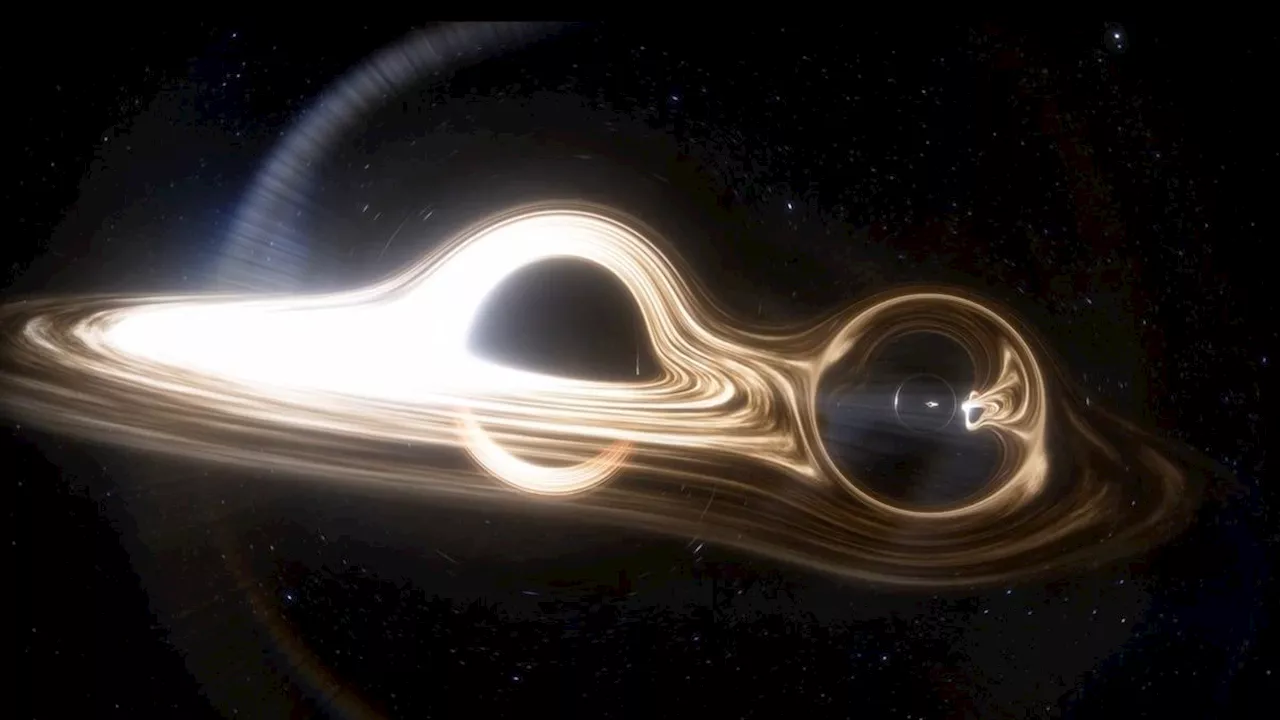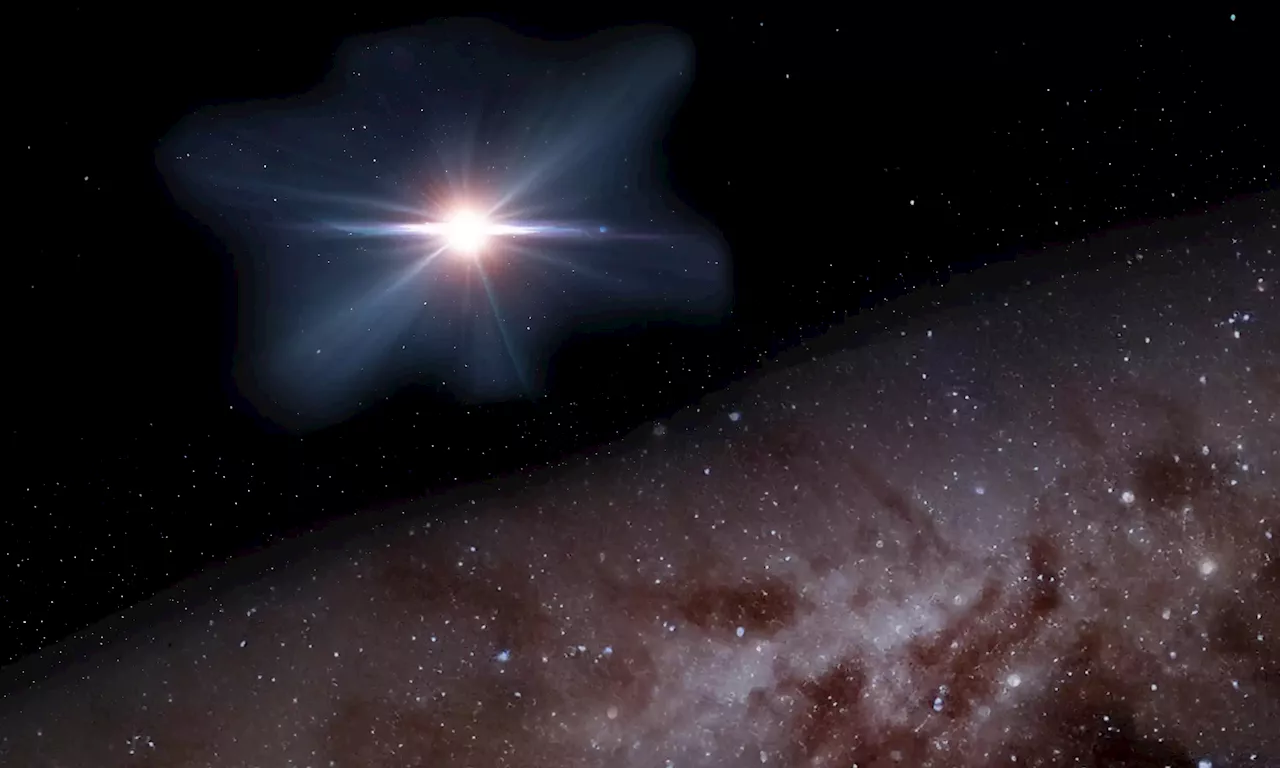Webb telescope observations reveal that even young galaxies house massive black holes, raising questions about their rapid growth. The answer might lie in powerful jets emitted by these black holes, which can accelerate matter towards them, enabling faster mass accumulation.
Within nearly every galaxy is a supermassive black hole. The beast at the heart of our galaxy contains the mass of millions of suns, while some of the largest supermassive black holes can be more than a billion solar masses. For years, it was thought that these black holes grew in mass over time, only reaching their current size after a billion years or more. But observations from the Webb telescope show that even the youngest galaxies contain massive black holes.
So how could supermassive black holes grow so large so quickly? The key to the answer could be the powerful jets black holes can produce. Although it seems counterintuitive, it is difficult for a black hole to consume matter and grow. The gravitational pull of a black hole is immensely strong, but the surrounding matter is much more likely to be trapped in orbit around the gravitational well than to fall directly in. To enter a black hole, material needs to slow down enough to fall inward. When a black hole has a jet of material speeding away from its polar region, this high-velocity plasma can pull rotational motion from the surrounding material, thus allowing it to fall into the black hole. For this reason, black holes with powerful jets also undergo the most powerful growth. We can see many fast-growing black holes in the distant Universe as quasars, or active galactic nuclei. We know, then, that in the middle age of the cosmos, many supermassive black holes were gaining mass rapidly. One idea is that the youngest supermassive black holes also had active jets, which would allow them to gain a million solar masses or more quite quickly. But proving this is difficult. The problem is that it’s extremely difficult to observe jets from the earliest period of the cosmos. Light from that distant time is so redshifted that their once brilliant beacon has become dim radio ligh
SUPERMASSIVE BLACK HOLES GROWTH GALAXIES JETS WEBB TELESCOPE
United States Latest News, United States Headlines
Similar News:You can also read news stories similar to this one that we have collected from other news sources.
 New Research may Explain how Supermassive Black Holes in the Early Universe Grew so FastSpace and astronomy news
New Research may Explain how Supermassive Black Holes in the Early Universe Grew so FastSpace and astronomy news
Read more »
 JWST Reveals Supermassive Black Holes Guiding Galaxy EvolutionUsing the James Webb Space Telescope, astronomers have observed an ancient galaxy cluster and found evidence that supermassive black holes are playing a crucial role in the evolution of galaxies.
JWST Reveals Supermassive Black Holes Guiding Galaxy EvolutionUsing the James Webb Space Telescope, astronomers have observed an ancient galaxy cluster and found evidence that supermassive black holes are playing a crucial role in the evolution of galaxies.
Read more »
The Mystery of How Supermassive Black Holes MergeThe giant holes in galaxies’ centers shouldn’t be able to combine, yet combine they do. Scientists suggest that an unusual form of dark matter may be the solution.
Read more »
 Hidden Black Holes Solve Milky Way Mystery'The hunt for elusive intermediate-mass black holes continues,' researcher Justin Read said.
Hidden Black Holes Solve Milky Way Mystery'The hunt for elusive intermediate-mass black holes continues,' researcher Justin Read said.
Read more »
 News Roundup: From Syria's Mass Graves to Black Holes and Wall StreetA selection of news stories covering a range of topics, including the aftermath of the Syrian civil war, the investigation into a Wisconsin school shooting, the NBA's All-Star game format, the Oscars shortlist, astronomical discoveries, holiday blues, a look at the effectiveness of UN summits, the future of organ transplants, and the latest on Wall Street.
News Roundup: From Syria's Mass Graves to Black Holes and Wall StreetA selection of news stories covering a range of topics, including the aftermath of the Syrian civil war, the investigation into a Wisconsin school shooting, the NBA's All-Star game format, the Oscars shortlist, astronomical discoveries, holiday blues, a look at the effectiveness of UN summits, the future of organ transplants, and the latest on Wall Street.
Read more »
 Astronomers Detect Unique 'Oscillatory' Signal from Devouring Black HolesResearchers have observed an unusual radiation signal from a pair of supermassive black holes devouring a massive gas cloud. The signal, repeating every 60-90 days, is unprecedented in active galactic nuclei and observed across X-rays, ultraviolet, and optical frequencies. This discovery offers new insights into the behavior of these cosmic giants and their interaction with galaxies.
Astronomers Detect Unique 'Oscillatory' Signal from Devouring Black HolesResearchers have observed an unusual radiation signal from a pair of supermassive black holes devouring a massive gas cloud. The signal, repeating every 60-90 days, is unprecedented in active galactic nuclei and observed across X-rays, ultraviolet, and optical frequencies. This discovery offers new insights into the behavior of these cosmic giants and their interaction with galaxies.
Read more »
